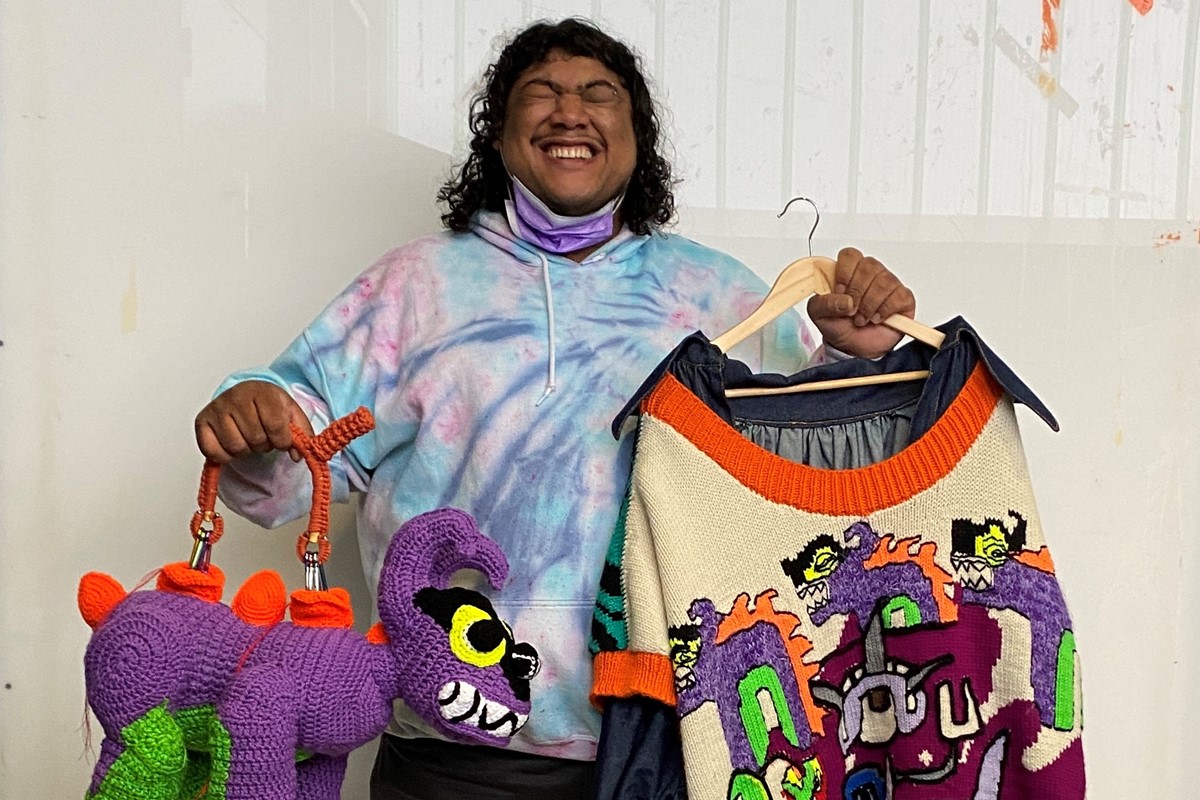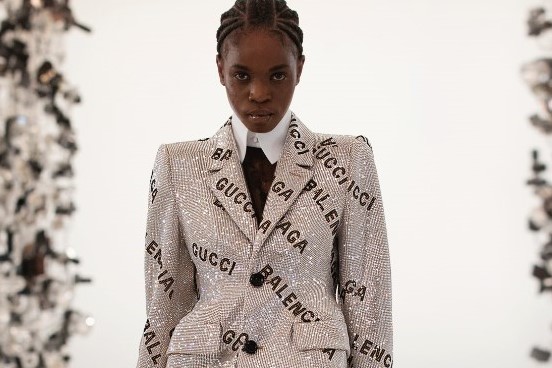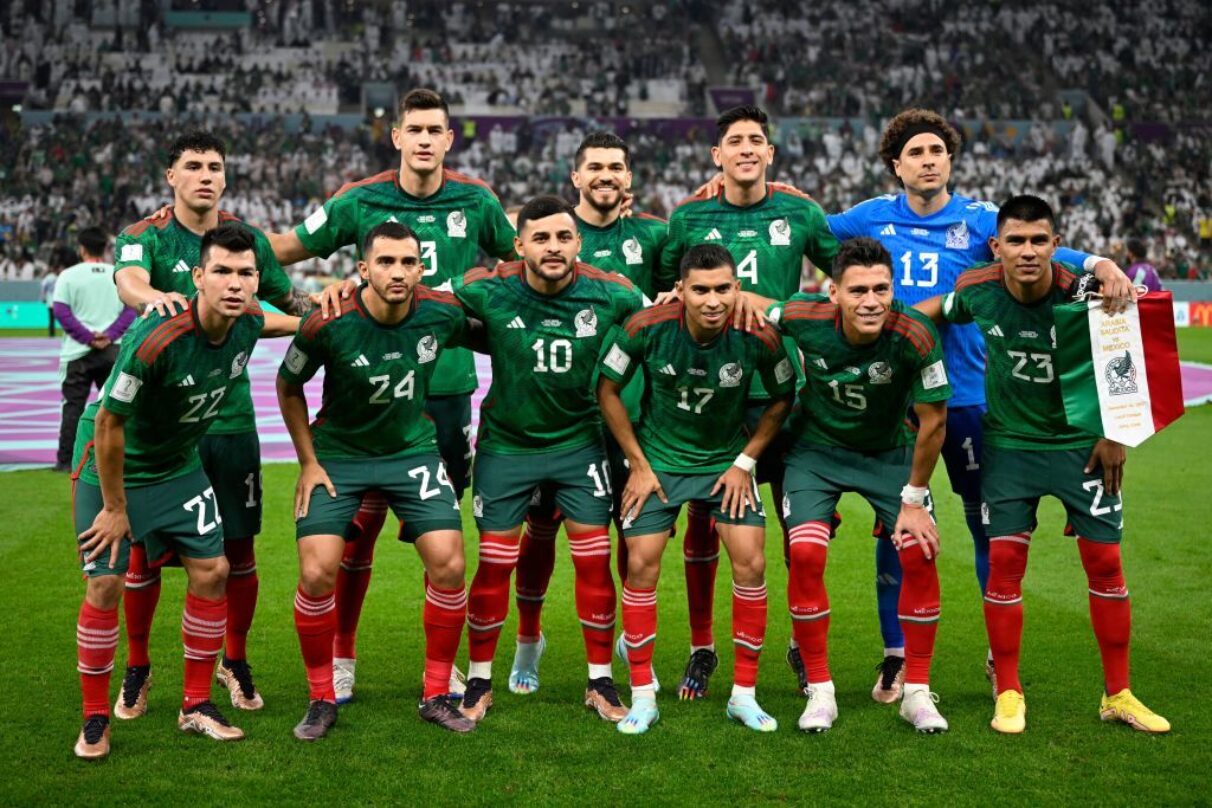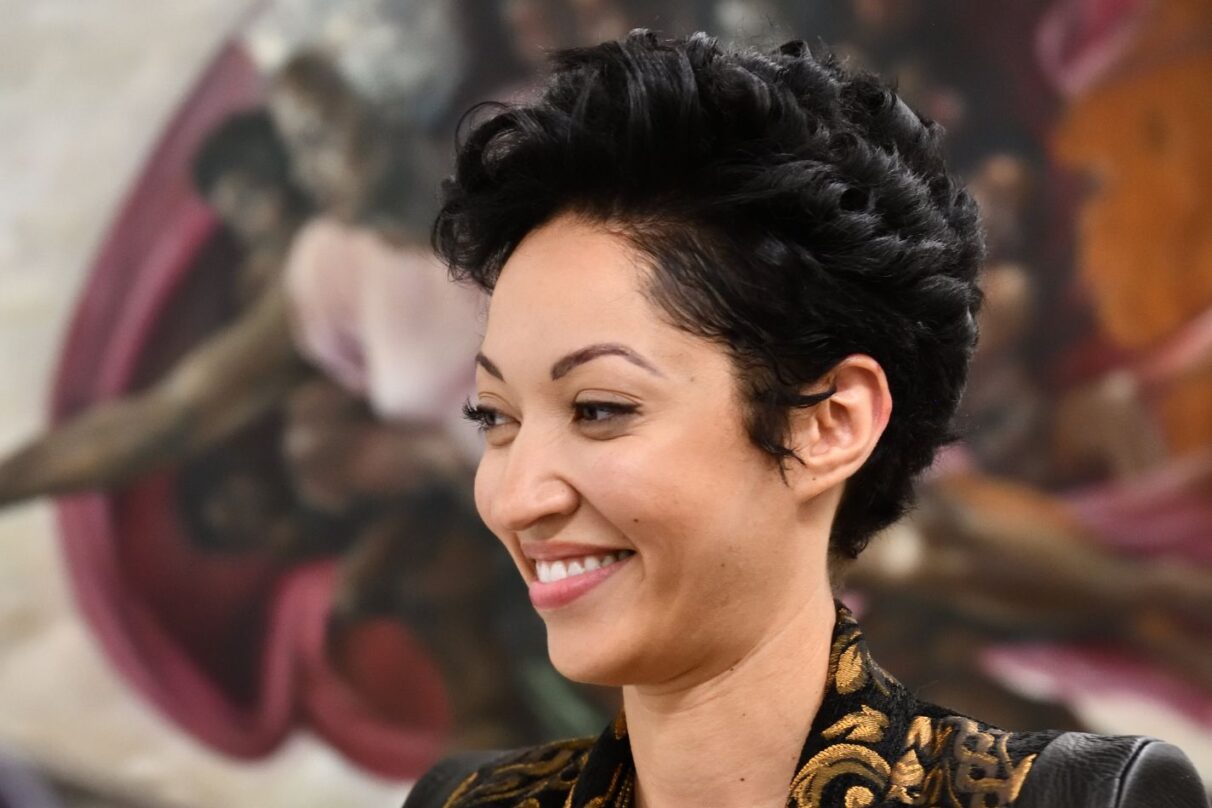
CSM grad Ed Mendoza makes clothes for big, sexy, powerful men
The emerging designer is transforming his own experience as a plus-size Peruvian-Caribbean into raucous and rave-ready clothing
Thanks to models like Paloma Elsesser, Precious Lee, and Tess McMillan booking some of the hottest shows on the planet, body diversity on the runway is becoming less of a faraway concept and more of a reality. Finally, after years of close to zero representation for those with larger bodies, it feels like we’re moving forward. But when we take a step back, look at the bigger picture, and consider the skewed image of fashion at large, it becomes abundantly clear that there’s a lot more to be done. Yes, it’s great that these gorgeous models are getting their spotlight, but what about actually designing clothes with them in mind? Will those pieces, seen on the runway and countless mag covers, ever become available in anything beyond a (tiny) Italian XL?
Another huge question is: what about the guys? Beyond Rihanna’s hyper-inclusive catwalk and e-com imagery for Savage x Fenty, plus a handful of designers creating for larger men – including Louis Gabriel Nouchi and Soulland – the presence of ‘plus-size’ male models within the context of high fashion is virtually non-existent. Cut to Ed Mendoza, a member of Central Saint Martins’ MA class of 2022, whose final collection stole the school’s graduate show last month at London Fashion Week.




“Mine was the first collection at CSM to have all plus-sized guys, I think even all plus-sized people,” explains Mendoza, whose work scored him a share of the prestigious L’Oreal Professionnel Creative Award. “I really didn’t know what was happening. But after we did the catwalk, they told me to go to the front along with [Jessan, fellow classmate], which we then figured out meant that we might have won. I was super emotional,” he remembers, still visibly shook. “Thinking of the struggles I’ve been through to where I am now, it was just incredible to feel appreciated and acknowledged. It’s everything I dreamed of, and it just feels crazy that it all happened,” he adds, before acknowledging how much of himself was poured into the collection.
“The way plus-size people are often portrayed is like we’re taking up space, and like we don’t love ourselves or feel good about our bodies. But that’s not always the truth. I really wanted to empower people like me and do something different,” he explains. “I wanted to show that we can be sexy and powerful, too.” It wasn’t an easy ride, however, with Mendoza admitting he shied away from leaning into clothes for larger bodies throughout his BA course. “It was stressful, because I worried what my tutors were going to think, and I held back because people warned me ‘what if someone drops out and you end up without a model?’ I worried whether fashion magazines would actually take and shoot my garments? But in the end, I decided for this show it didn’t matter. I just wanted to create clothes that are big enough, which will then give way to magazines giving opportunities to bigger people. And when you have the skills and the talent, you can make anyone look good.”
And that’s how change happens – instead of simply noting the injustice, Mendoza pushed his agenda further by embracing all of the elements that make his approach unique. Having previously modelled for Claire Barrow and Rottingdean Bazaar, the designer also walked in his own show. This might feel like a traditional notion in womenswear, where we often hear from designers who *adopts Julia Fox voice* consider themselves their own muses, in menswear, it’s a much rarer occurrence. “One thing that always stuck with me was – can you really trust a designer who doesn’t wear their own stuff? I would only ever show stuff that I believe in and want to wear, and would love someone else to wear it as well. If I wouldn’t wear it, why am I designing it?” he says.
It wasn’t just seeing such a size inclusive collection on the runway that got everyone talking, though. Mendoza’s clothes themselves are really, really good in their own right. Growing up in West London to a Peruvian father and a Caribbean mother of Grenada and St Lucia, he credits a lot of his creative expression to his dual heritage. And for this offering, Mendoza worked on creating the ultimate mash-up of personal stories that resulted in a technicolour explosion of joy.
“Can you really trust a designer who doesn’t wear their own stuff? I would only ever show stuff that I believe in and want to wear, and would love someone else to wear it as well” – Ed Mendoza
“Initially, I was inspired by pirates and seawear from the 16th and 17th century, but it ended up morphing into a whole other world,” he explains. With billowing sleeves and map drawings still present in the collection, the final outcome incorporated personal memories of his late dad. “The look I wore in the show, I wanted it to represent my identity. My dad was a dental technician and I remember going into his studio and being fascinated by him moulding teeth and dentures. In the process of making this collection, I realised there are a lot of teeth throughout, which must be subconsciously inspired by him.”
Mendoza found his psychedelic colour palette by looking at the Peruvian tradition of Chicha posters – artisanal screen-printed works on paper, with bright fluorescent colours and punchy lettering. And you know, it’s quite rare to see rainbow colours interpreted in contemporary menswear, elevated beyond Tesco’s temporary Pride section that rolls around every June. But the story extends far beyond what’s visible at first sight.
“I also looked at the colonisation of Peru and the Caribbean, particularly through the shapes and the contrasting of the indigineous imagery. I’ve always liked people like Walter van Beirendonck, where something catches your eye because it’s so colourful, but also tells you a story that’s important – like his use of the colour red as a way to raise awareness of AIDS,” Mendoza says. “It’s important [to me] to be colourful and bright, but there also has to be meaning behind it.” Mendoza’s love of Beirondonck also manifested in his accessories – particularly the cartoon-ish crochet dinosaur bag he nicknamed Donck after the Belgian designer.
Denim was one of Mendoza’s favourite things to work on, particularly due to the hours he spent figuring out the right techniques to etch his drawings of pre-Columbian symbols, specifically the intricate sculptures from Adobe buildings in Chan Chan. “When people think of Peru, they usually think of Machu Picchu and Lake Titicaca, and there is so much more history that isn’t so well-known.” The iconography is splashed across pieces that turn the volume up on the silhouettes of iconic JNCO Jeans, which the designer himself wore throughout his adolescent years.
“I feel like they emulate 1990s LA rave culture, especially Mexican American and Latinx people who would go to raves wearing wacky outfits and baggy jeans. I wanted to do my own version of that and give the person a chance to dance, move, groove and do their own thing.” His teenage music taste also appeared on the screen printed tie-dye t-shirts, referencing Motorhead and Black Sabbath through the use of War Pig both as an illustration and in the name of his brand, Warpig Wonder.
Though he’s still riding high on the success of his show, Mendoza isn’t finished with his uni days just yet. “I still need to graduate,” he exclaims while prepping to hand in the portfolio part of his final project. With plans to soon launch a pop-up shop and sell his product for the first time – with t-shirts, Osiris trainers customised with paint and 3D prints of his ceramic sculptures all on the line-up – the emerging designer has a solid idea for his future. Would he ever consider working for another brand? “Who knows, if I get a really good offer… But I want to have the freedom to make and create things, I don’t want to lose that by being another cog in the industry and forgetting why I do what I do. Representing the countries I’m from and people who look like me. If I’m not going to do it, who else will?”



